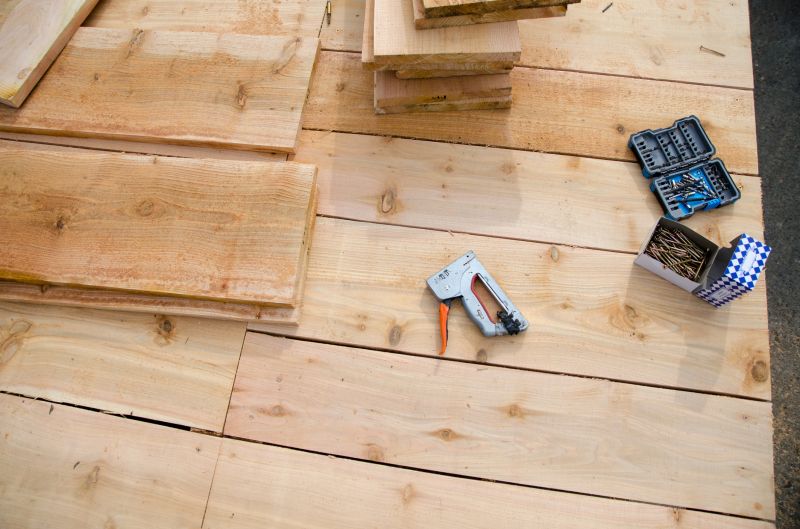Favorite Porch Board Replacement Solutions For Durable Outdoor Spaces
Choose from trusted porch board options crafted for resilience and style to ensure your porch remains inviting for years.
 Porch boards are a fundamental component of many outdoor living spaces, providing a sturdy and attractive surface for entryways, patios, and decks. Over time, these boards can experience wear and tear due to exposure to weather, foot traffic, and natural aging, leading to cracks, splinters, or rot. Replacing porch boards is an essential maintenance task that can enhance safety and aesthetics. Fortunately, there are numerous product options designed specifically for porch board replacements, ranging from traditional wood planks to innovative composite materials.
Porch boards are a fundamental component of many outdoor living spaces, providing a sturdy and attractive surface for entryways, patios, and decks. Over time, these boards can experience wear and tear due to exposure to weather, foot traffic, and natural aging, leading to cracks, splinters, or rot. Replacing porch boards is an essential maintenance task that can enhance safety and aesthetics. Fortunately, there are numerous product options designed specifically for porch board replacements, ranging from traditional wood planks to innovative composite materials.
Top Overall Option
Composite Porch Boards
Composite porch boards are a versatile and low-maintenance alternative to traditional wood. They are made from a blend of wood fibers and plastic, offering resistance to rot, splintering, and insect damage. These boards typically come in a variety of textures and colors, allowing for a customized look that can mimic natural wood grain. Easy to install and maintain, composite porch boards are suitable for various outdoor applications and can provide a durable surface that withstands the elements over time.
Types of Products For Porch Board Replacements
Wooden Planks
Traditional wooden planks are a classic choice, offering natural beauty and ease of customization. They can be stained or painted to match existing decor but require regular maintenance to prevent rot and splintering.
Composite Boards
Composite boards combine wood fibers and plastic for a low-maintenance, durable surface that resists weathering and pests. Available in various textures and colors.
PVC Vinyl Boards
PVC vinyl boards are lightweight, waterproof, and resistant to decay. They are easy to clean and require minimal upkeep, making them suitable for high-traffic areas.
Cedar or Redwood Boards
Cedar and redwood offer natural resistance to decay and insects, with an attractive appearance that ages gracefully. They may require treatments for added longevity.
Composite Deck Tiles
Interlocking deck tiles made from composite materials provide a quick and flexible solution for porch board replacement, allowing for easy installation and replacement.
PVC Wrap Boards
PVC wrap boards are designed to overlay existing wood, providing a fresh look while protecting the underlying surface from further damage.
Recycled Plastic Lumber
Made from recycled plastics, these boards are highly resistant to moisture, insects, and decay, suitable for long-term outdoor use.
Pressure-Treated Lumber
Pressure-treated lumber is infused with preservatives to resist rot and insect damage, commonly used in outdoor construction projects.
Composite Railing and Skirting
Complementary to porch boards, composite railing and skirting options can enhance safety and aesthetic appeal for outdoor spaces.
Decorative Concrete Overlays
For a unique look, decorative concrete overlays can be used to create a durable, textured surface that resembles wood or stone.
Popular Choices
Highly regarded for their durability and low maintenance, composite boards are frequently chosen for porch replacements.
A traditional favorite that offers natural beauty, often selected for its aesthetic appeal and ease of customization.
Known for their waterproof qualities and minimal upkeep, vinyl boards are a trending choice for outdoor surfaces.
An increasingly popular sustainable option, offering resistance to environmental damage with minimal maintenance.
Natural resistance and aesthetic appeal keep cedar and redwood options in high demand among homeowners.
Flexible and easy to install, interlocking tiles made from composite or other materials are trending for quick upgrades.
A common choice for structural integrity and affordability, pressure-treated lumber remains a popular option.
Offering a durable and decorative surface, concrete overlays are gaining popularity for aesthetic customization.
When selecting replacement porch boards, it is important to consider durability, ease of installation, maintenance requirements, and visual appeal. Many products are engineered to withstand the elements without warping or rotting, offering long-lasting performance. Depending on the existing porch structure and personal preferences, homeowners and contractors can choose from various materials that suit their specific needs. Proper installation ensures safety and longevity, making the right product choice vital.
In addition to traditional wood options, composite and vinyl materials have gained popularity due to their low maintenance and resistance to environmental damage. These alternatives often come in a variety of colors and textures, allowing for customization that complements the overall aesthetic of the home. Some products also feature slip-resistant surfaces, which can enhance safety, especially in wet conditions. Whether updating a small porch or a large deck, selecting the right replacement boards can significantly improve the functionality and appearance of outdoor spaces.
Ultimately, understanding the different product types and their characteristics can help homeowners make informed decisions. By evaluating factors such as material quality, installation method, and cost, individuals can find suitable porch board replacements that meet their needs and preferences. Properly chosen and installed porch boards can provide years of reliable service while enhancing the charm and usability of outdoor living areas.
Key Buying Considerations
- Material durability and resistance to weathering
- Maintenance requirements and longevity
- Compatibility with existing porch structure
- Ease of installation and DIY friendliness
- Aesthetic appeal and color options
- Slip resistance and safety features
- Cost and budget constraints
- Environmental exposure and climate suitability
- Availability of matching accessories like railings and skirting
- Warranty and manufacturer support
- Potential for customization or staining
- Environmental impact of material choices
- Weight and ease of handling during installation
- Compatibility with existing fasteners and hardware
- Local building codes and regulations
